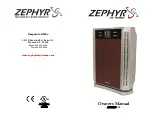
- 34 -
Caution:
•
Use refrigerant piping made of C1220 (CU-DHP) phosphorus deoxidized
copper as specified in the JIS H3300 “Copper and copper alloy seamless
pipes and tubes”. In addition, be sure that the inner and outer surfaces of
the pipes are clean and free of hazardous sulphur, oxides, dust/dirt, shav-
ing particles, oils, moisture, or any other contaminant.
•
Never use existing refrigerant piping.
- The large amount of chlorine in conventional refrigerant and refrigerator oil
in the existing piping will cause the new refrigerant to deteriorate.
•
Store the piping to be used during installation indoors and keep both
ends of the piping sealed until just before brazing.
- If dust, dirt, or water gets into the refrigerant cycle, the oil will deteriorate and
the compressor may fail.
Additional refrigerant charge
•
Take care not to allow dirt or cutting chips to enter the refrigerant pipes.
•
The refrigerant pipes must be kept warm, so take particular care to insulate
between refrigerant pipes and the gas pipe located inside the indoor unit, since
the gas pipe causes condensation during cooling operation.
•
When connecting the refrigerant pipes, make sure that the stop valve of the
outdoor unit is fully closed (as it was when shipped from the factory). After
connecting all the refrigerant pipes between the indoor and outdoor units, purge
air from the stop valve service port of the outdoor unit and service port of each
connecting pipe. Check that there is no air leakage from any pipe connection,
then fully open the stop valve of the outdoor unit. This will connect the refriger-
ant circuit between the indoor and outdoor units.
•
The refrigerant pipes must be as short as possible.
•
Flare and flange connections must be used for connection of the refrigerant
pipes.
•
The indoor and outdoor units must be connected with the refrigerant pipes.
PEH-7, 8MYB
PEH-10MYB
Brazing
Brazing
30 m or less
30 m or less
15 or less
15 or less
50 m or less
50 m or less
ø15.88
ø15.88
ø25.4
ø28.58
Piping Method
Height Difference between
Indoor and Outdoor Units
Number of bends (right angles)
Total Piping Length
Refrigerant Pipe Size (mm)
Liquid Pipe
Gas Pipe
1
1
1
1
1
-6.2. Drain piping work
A
A
C
B
E
E
G
A
D
F
A
Brazing
B
Flare joint
C
Gas pipe
D
Liquid pipe
E
Service port (ball valve)
F
Indoor unit
G
Outdoor unit
[Fig.
1
1
1
1
1
-6.1.3]
Warning:
During installation and re-installation, take care not to allow any gas or ma-
terials other than the specified refrigerant (R22) to enter the refrigerant cy-
cle. Entry of air will cause extremely high pressure inside the refrigerant
cycle, possibly resulting in breakage of pipes.
G
F
D
H
I
J
E
C
A
B
[Fig.
1
1
1
1
1
-6.2.1]
A
Insulator
B
Drain pipe Rc1
C
Drain pan
D
>
= 70 mm
E
>
= 2
×
F
>
= 70 mm
F
>
= 35 mm
G
Downward slope 20mm/m or more
H
Drain trap
I
The drain pipe should extend below this level.
J
Open drain
1.
Ensure that the drain piping is downward (pitch of more than 20 mm/m) to the
outdoor (discharge) side.
2. Ensure that any cross-wise drain piping is less than 20 m (excluding the differ-
ence of elevation). If the drain piping is long, provide metal braces to prevent it
from waving. Never provide any air vent pipe. Otherwise drain may be ejected.
3. Use a hard vinyl chloride pipe VP-25 (with an external diameter of 32 mm) for
drain piping.
4. Ensure that collected pipes are 10 cm lower than the unit body’s drain port .
5. Put the end of the drain piping in a position where no odor is generated.
6. Do not put the end of the drain piping in any drain where ionic gases are
generated.
s
Refer to the installation manual for details of the additional amount of
refrigerant for the outdoor unit.
1
1
1
1
1
-7.
Duct work
•
In connecting duct, insert canvas duct between unit and duct.
•
Use incombustible material for duct parts.
•
Provide full insulation to inlet duct flange, outlet duct flange and outlet duct to
prevent condensation.
•
Be sure to apply the air filter near the air inlet grille.
•
Before connecting an inlet duct, remove the air filter (supplied with the unit),
then install that filter in the inlet grille.
Caution:
•
Outlet duct is 850 mm or more necessary to construct.
•
To connect the air conditioner main body and the duct for potential equali-
zation.
•
Inlet temperature sensor when an inlet duct is installed.
An inlet temperature sensor is installed on the inlet duct flange. Before con-
necting an inlet duct, this sensor must be removed and installed in the speci-
fied position.
E
B
F D
C
A
G
G
[Fig.
1
1
1
1
1
-7.0.1]
A
Air inlet
B
Air outlet
C
Access door
D
Ceiling surface
E
Canvas duct
F
Keep duct-work length 850 or more
G
Connect common reference potential wire between duct-work to air conditioner
E
B
C
D
A
12.5
25~100mm
10mm
[Fig.
1
1
1
1
1
-7.0.2]
A
Inlet duct flange
B
Inlet temperature sensor
C
Sensor protection plate
D
Sensor fixture
E
Inlet duct
















































